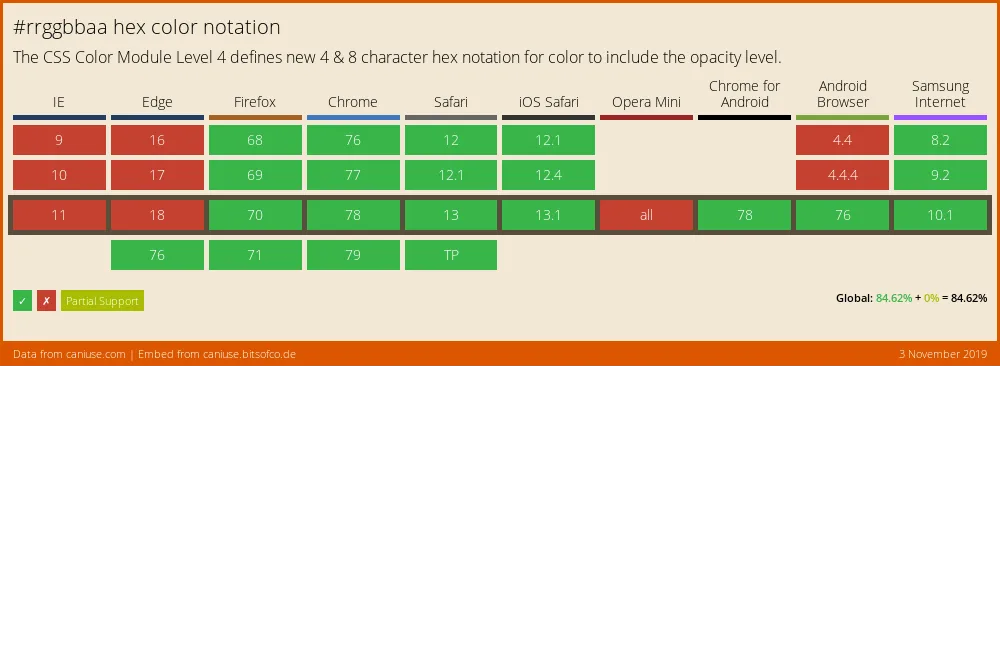Adding transparency to hex colors
One thing hidden somewhere in the CSS specifications is the fact that you can use four or eight digits to represent a hexadecimal color, three or six to represent the color and one or two to represent the alpha transparency. For clarity's sake, the post will only cover the eight-digit version.
What is this? #
If you're familiar with the RGB/RGBA color space in CSS you will see two different types of color, one solid color and one with some level of transparency.
RGB colors use values from 0 to 255 or 1 to 100% to represent color and values from 0 to 1 to represent transparency.
The example below shows an example of RGB and RGBA colors and how they look in the browser.
Partially transparent: rgba(6,52,164, .45)
Fully Opaque: rgba(6,52,164, 1)
Hex and Hex + Transparency Colors #
For most developers (myself among them), Hexadecimal (hex) colors are the first type of colors we've used with CSS.
It came as a surprise that you could expand the format to include alpha channel transparency.
The following examples show three of the syntaxes available for Hex colors:
- The traditional 6 digit syntax
- The "new" 8 color syntax using full opacity
- The "new" syntax using transparency
Fully Opaque:; #0634a4
Fully Opaque (with trasparency): #0634a4ff
Partially transparent: #0634a466
The hardest part of this is to figure out how transparency works in hexadecimal numbers.
Remember that RGBA colors work with transparency between 0 and 1, but working with values from 00 to FF is conceptually harder (at least for me). It'll take a lot of trial and error to get the numbers right.
Browser support #
Browser support is pretty good with Edge, the last outlier coming into the fold once the Chromium version of Edge goes into regular release.

